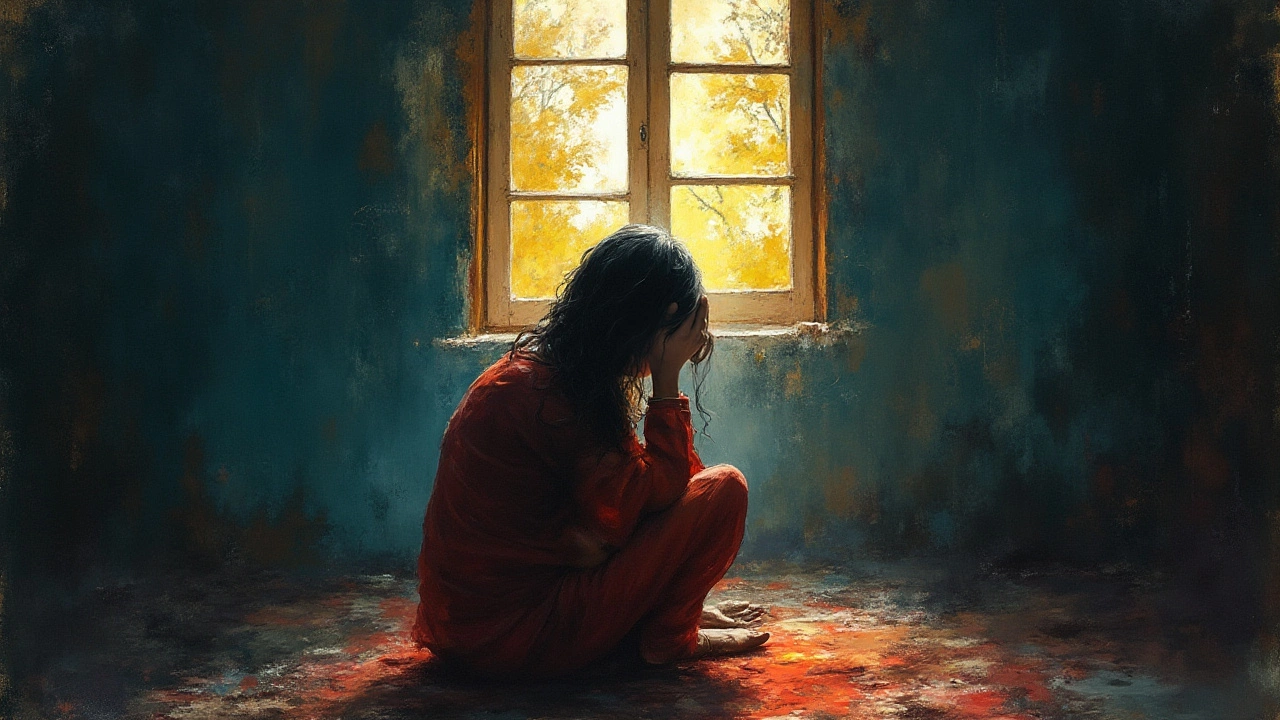Try to imagine waking up every day and finding yourself locked in a cage you can’t see, can’t touch, and can’t explain to anyone else. Your mind becomes your own worst enemy. Pain—real pain—doesn’t just hurt your body, it crawls into your thoughts, distorts reality, and colors every moment with agony. That’s the kind of silent torture that comes with the world’s most excruciating mental illnesses.
The Weight of Pain: The Battle Within Severe Mental Illnesses
When people talk about pain, physical wounds come to mind. But let’s be real—mental suffering can hit so much harder. Among all the conditions out there, there’s an intense debate in psychiatry and among survivors about which mental illness is the most torturous. While it’s hard to measure agony, one diagnosis shows up again and again in testimonies, research, and tragic stories: Major Depressive Disorder, especially when it's tied to treatment-resistant depression, and Borderline Personality Disorder are widely viewed as the ultimate tests of human endurance.
The World Health Organization ranks depression as one of the top causes of disability worldwide. But what sets the most severe depressive episodes apart is not just the sadness or low mood. It’s the unrelenting emotional and physical anguish that feels like walking through quicksand every single day. Some people say it’s like living inside a body that fights to survive, with a mind that’s set on self-destruction. Those who battle with Major Depressive Disorder often report a crushing, relentless feeling of emptiness, guilt, and even physical pain.
On top of that, Borderline Personality Disorder (BPD) brings a level of emotional volatility that’s off the charts. Intense mood swings strike in minutes rather than days, tormenting people with feelings of abandonment, rage, or emptiness. Scientific studies reveal that people with BPD often have higher rates of self-harm and suicide attempts compared to any other psychiatric condition. That’s not just a number—it’s real pain reflected in real lives lost or reshaped by mental suffering.
Schizophrenia has its own brand of suffering—delusions and hallucinations can completely hijack reality. Imagine seeing things that aren’t there or hearing voices that tell you you’re worthless. With no off switch, it becomes exhausting and frightening. For some, OCD (Obsessive Compulsive Disorder) is a slow torment where thoughts become so intrusive that people build their days around rituals just to escape the terror—even for a moment. A ground-breaking study published in The Lancet once placed OCD among the top ten causes of disabling illness, underlining the daily misery it brings.
So, what’s the verdict? There isn’t one perfect answer. But if you pressed psychiatrists and those living through it, severe depression and BPD usually top the list for a reason. It’s not just what the textbooks say—it’s how consistently survivors describe their torment as "unbearable," "never-ending," or "worse than physical pain." Many say they would trade it for any other illness if they could.
Why Does It Hurt So Much? The Science Behind Unbearable Mental Pain
Here’s the wild part: chronic mental pain actually triggers some of the same brain circuits as physical pain. That’s not just poetic—it’s a fact from neuroscience. Researchers from the University of Michigan used MRI scans to show that rejection, humiliation, or deep emotional pain literally light up the brain’s pain pathways. There’s even a word for mental pain that mimics physical torture: psychache. It isn’t just “in your head”—it’s a full-body experience. Imagine the sharp sting of burning your skin, but stretched out for weeks, months, or even years, all inside your mind.
Major depressive disorder doesn’t just cause sadness; it hijacks sleep, appetite, memory, and even causes unexplained physical pain. For some, the brain gets stuck in a loop—negative thoughts repeat endlessly, draining joy from life. Borderline Personality Disorder dumps gasoline on this situation. The amygdala, which is the brain’s fear and emotion center, fires up far more intensely in BPD, flooding the body with stress chemicals. Every insult feels personal. Every disappointment, catastrophic. One therapist compared it to "living without skin"—every touch, even a kind word, can feel overwhelming or dangerous.
The confusion and terror in schizophrenia or schizoaffective disorder up the ante even more. When reality crumbles, or the voices just won't stop screaming, it can push anyone to the edge of their endurance. In studies, patients describe paranoia, loneliness, shame, and hopelessness—the kind of pain no visible scar can explain.
Obsessive Compulsive Disorder brings its own unique agony. Sufferers aren't "quirky neat freaks"—their minds get trapped in endless, distressing thought cycles, like being stuck in mental quicksand. One person shared that intrusive thoughts felt "worse than torture" because there was no escape, no break, and little understanding from the outside world. Treatments like SSRIs or therapy help some, but for the unlucky minority, standard options don’t work. They feel abandoned not just by their brains but by the whole medical system.
What tips the balance is when pain becomes unremitting—when it feels like nothing can relieve it. Suicide risk skyrockets. In the UK, for instance, people with untreated BPD are up to 50 times more likely to attempt suicide. The same story plays out with severe depression and chronic PTSD. Mental pain can be every bit as life-threatening as heart disease or cancer.

Living With the Unbearable: Stories, Myths, and Survival Strategies
It’s easy to underestimate the darkness, but scroll through online forums or attend a support group, and the stories will hit you like a punch. You’ll find people who have survived dozens of suicide attempts, spent months in psychiatric hospitals, and lost relationships, jobs, and even their sense of identity to mental illness. They often talk about feeling “burned alive while smiling on the outside,” or “falling through a bottomless hole every day.”
There’s a brutal myth that people with depression or BPD can “snap out of it” or are just being dramatic. Science completely trashes this stereotype. The American Psychological Association spells it out: chemical imbalances, genetics, and trauma all blend into a toxic soup, making symptoms as real and disabling as a physical illness. And for those with treatment-resistant depression, no amount of cheerful advice will do the trick. About 30% of patients with depression don’t respond to standard treatments, and live years in limbo, cycling between hope and disappointment.
But it isn’t all bleak. Creative routines, social connection, exercise, deep breathing, and even pets can give some momentary comfort. New brain stimulation treatments, like Transcranial Magnetic Stimulation (TMS) and ketamine therapy, have given hope to those left behind by traditional medications. Support groups—both in-person and online—make a real difference by showing people they aren’t alone. Having just one trusted friend or family member to lean on can literally save a life.
Doctors say it’s important to treat pain and not just the label. If your mind won’t shut up with negativity or panic, you’re struggling for a reason. Join a community, text a hotline, try meditation, or start a small daily routine—even if it’s just making your bed or getting sunlight through the window. Sometimes the smallest victories matter the most.
What Can You Do? Tips for Coping and Supporting Others
If you’re living in survival mode with one of these illnesses, even reading this might feel like a mountain. But here are some survival tips worth considering:
- Reach out, even if it feels impossible. Whether it’s a friend, a therapist, or an anonymous chat service, human connection truly matters. Don’t push yourself to talk about everything—just say “I’m having a rough time” and let that be enough for now.
- Build tiny habits. Experts like Dr. Judson Brewer say the brain loves momentum—if you can brush your teeth, drink a glass of water, or open the curtains, you’ve started moving again. Those micro-actions add up, even if it feels pointless at first.
- Use grounding techniques for overwhelming emotions—count backward from 100, focus on five things you can see, or splash cold water on your face. Tricks like this interrupt spirals and remind your brain you’re still present, no matter what your thoughts say.
- If someone you care about is suffering, don’t tell them to “cheer up” or puzzle out solutions unless they ask. Instead, sit with their pain. Sometimes all anyone needs is someone who’s willing to just listen.
- Research shows exercise, even a little, can lower the volume of suffering. You don’t have to run a marathon—just walk around the block or stretch. The "runner’s high" comes from endorphins, nature’s brain painkillers.
- For severe cases, look into medical breakthroughs. Transcranial Magnetic Stimulation (TMS), ketamine infusions, and even deep brain stimulation (DBS) have shown positive effects in treatment-resistant illnesses. Ask your doctor or a specialist if you qualify; don’t be afraid to advocate for yourself.
- Avoid self-medication with alcohol or drugs—it’s tempting in the moment, but makes everything harder long-term. Connections with others and gentle routines work better to break the cycle.
- If you’re worried about someone’s safety, don’t ignore your gut. Simple words like, “Are you thinking about hurting yourself?” don’t push them over the edge. More often, it’s a relief to be asked.
- Write stuff down. Journaling, even simple lists about what makes life a little bearable, can sometimes cut through the noise and organize your thoughts.
- Finally, remember this: Pain distorts reality. Just because things feel hopeless doesn’t mean they truly are. Your future self might be stunned at what changes in a month, six months, or a year.
Naming the most excruciating mental illness doesn’t do justice to the pain people face daily. What matters more is understanding, compassion, and new hope through science and community. Nobody’s suffering is invisible, even if you can’t see the scars—real people are fighting these battles every day, sometimes winning, sometimes just surviving. But the world grows a little softer each time we talk openly about what's truly the hardest pain to bear: the kind no one else can see.
